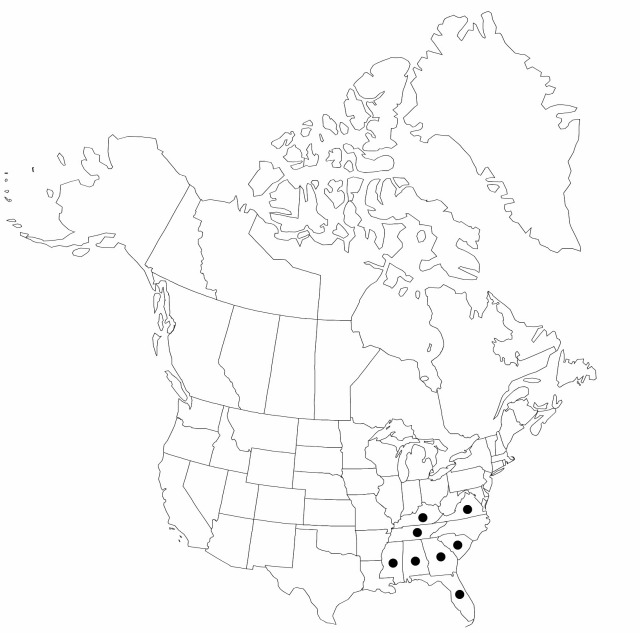Carex superata
Amer. J. Bot. 85: 443, figs. 1, 2, 4, 5, 6(left). 1998.
Culms erect, (4.7–) 7.1–14.4 cm, 1/5–2/5 of total plant height. Leaves: basal sheaths pale-brown to dark-brown; blades green, much exceeding culms, 1.2–4.6 mm wide, herbaceous, margins green, smooth or scabrous. Lateral spikes 0–2 (–3), basal, on erect or spreading (rarely drooping) peduncles. Terminal spikes with staminate portion 7–56-flowered, (5.4–) 9.6–20.1 × 0.7–1.6 mm; pistillate portion spike 2–4 (–6) -flowered. Pistillate scales green, margins hyaline, white, tinged reddish-brown, (0.9–) 1.2–2.4 mm wide, not more than 1.5 times as wide and not concealing perigynia, apex attenuate into green awns; distal scales with hyaline margins 0.3–0.8 mm wide, apex acuminate, awnless, or scabrous-awned to 5.7 mm. Staminate scales green or tinged with pale-brown, ovate, 2.5–4.1 × 1.6–2 mm, margins free but enfolding scales above, hyaline, white, apex obtuse, erose. Anthers 1.1–1.4 mm. Perigynia (3–) 4–9 per spike, pale green to pale-brown, often speckled reddish-brown, narrowly ovoid or lanceovoid, (7–) 7.5–8.9 (–10.8) × 1.5–2.3 mm, tightly enveloping achenes, apex gradually tapering; beak (3.6–) 4.1–5 (–6.4) mm, scabrous. Stigmas filiform, flexuous, long, thin, strongly papillose. Achenes brown, oblong, (2.1–) 2.5–3.1 (–3.3) × (1.4–) 1.5–1.9 (–2.1) mm.
Phenology: Fruiting spring–summer (late Mar–mid Jul).
Habitat: Acidic to neutral clays, often high in potassium and magnesium, in moist to dry mesic, open, deciduous forests, ravines
Elevation: 50–500 m
Distribution

Ala., Fla., Ga., Ky., Miss., S.C., Tenn., Va.
Discussion
Selected References
None.
Lower Taxa
"shortened" is not a number."widest" is not a number."thin" is not a number.
